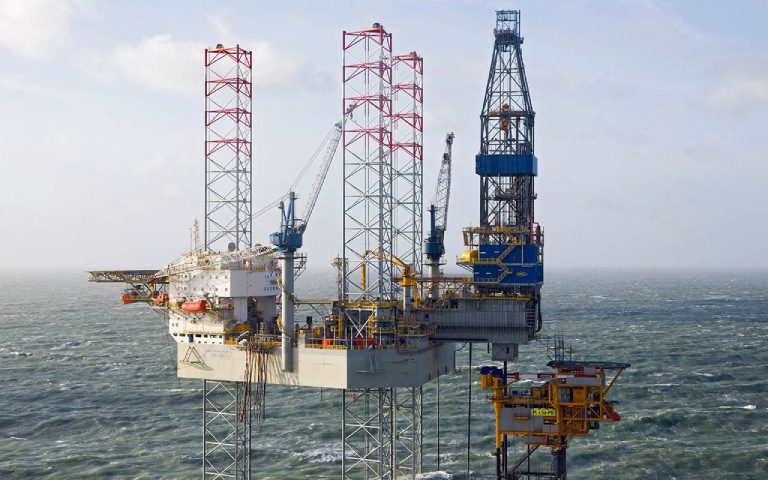By Francois de Beaupuy and William Mathis (Bloomberg) —
Floating wind energy projects could open up vast areas of the world’s oceans to produce carbon-free power. But developers must first solve two key technical problems, according to France’s electric-grid operator.
Sea swell can cause vibrations that harm floating-substation equipment, while cables can be damaged by a buildup of shells and seaweed, Reseau de Transport d’Electricite said. These issues must be tackled before floating wind can succeed on a large scale, and RTE is among operators trying to fix them.
This nascent segment of the clean-power industry would significantly expand the potential areas of the sea where energy producers could install turbines. In many places, the best wind resources are in waters that are too deep to build a structure from the seabed. But the new floating technology is expensive and at risk of damage from waves and sealife.
Substations are used to change the voltage of the electricity produced by the offshore wind farms so it can be more easily and safely delivered to shore. One solution under consideration is a floating version that can withstand strong swell, said Regis Boigegrain, head of maritime affairs at RTE, which is responsible for connecting France’s offshore turbines to the grid.
“Provided we know how to technically do that,” it would avoid the substantial cost of building a substation on the seabed, he said at a conference.
Such a substation may be considered for two projects in the Mediterranean Sea, which France’s government plans to tender next year, according to Boigegrain. RTE is working with partners such as French shipyard Chantiers de L’Atlantique to see whether floaters can sufficiently absorb swell and minimize vibrations.
That contest will be one of the first major chances for developers to build a large-scale floating wind project. It could bring in utilities such as Electricite de France SA and Engie SA, as well as oil companies like Royal Dutch Shell Plc and Total SE, that have been investing in smaller-scale projects to develop expertise with the technology.
High-voltage cables will also have to be resilient enough to handle swell, as well as “biofouling” — the accumulation of shells, seaweed and sponges — which can be so heavy that it causes damage, Boigegrain said.
The offshore-wind industry’s growing pains aren’t limited to France. Earlier this year, developer Orsted A/S found that cables at a wind farm off the U.K. had been damaged by scraping against rocks on the seabed.
Both countries — and South Korea — have the biggest opportunities for floating wind this decade, according to a BloombergNEF report.(Adds detail about tender in seventh paragraph.)
© 2021 Bloomberg L.P.

 Join The Club
Join The Club











